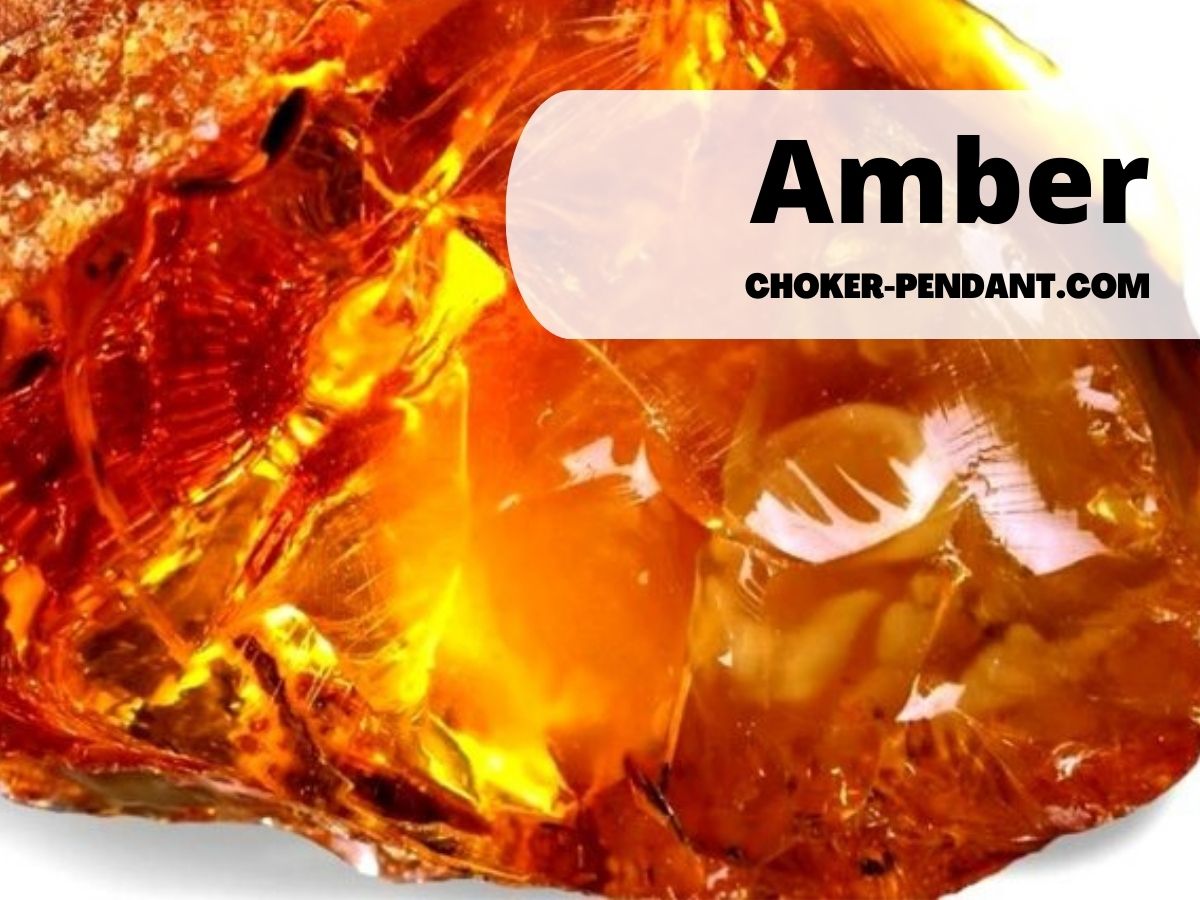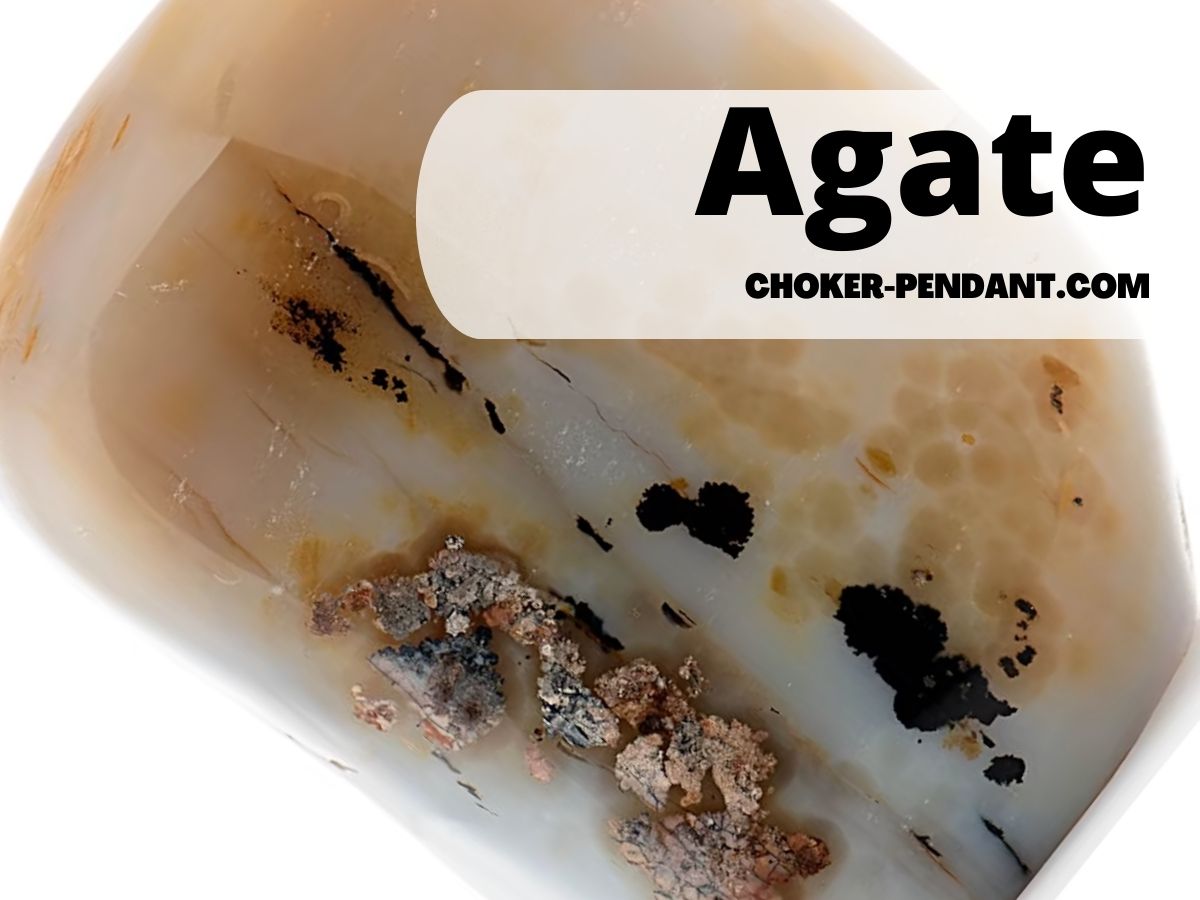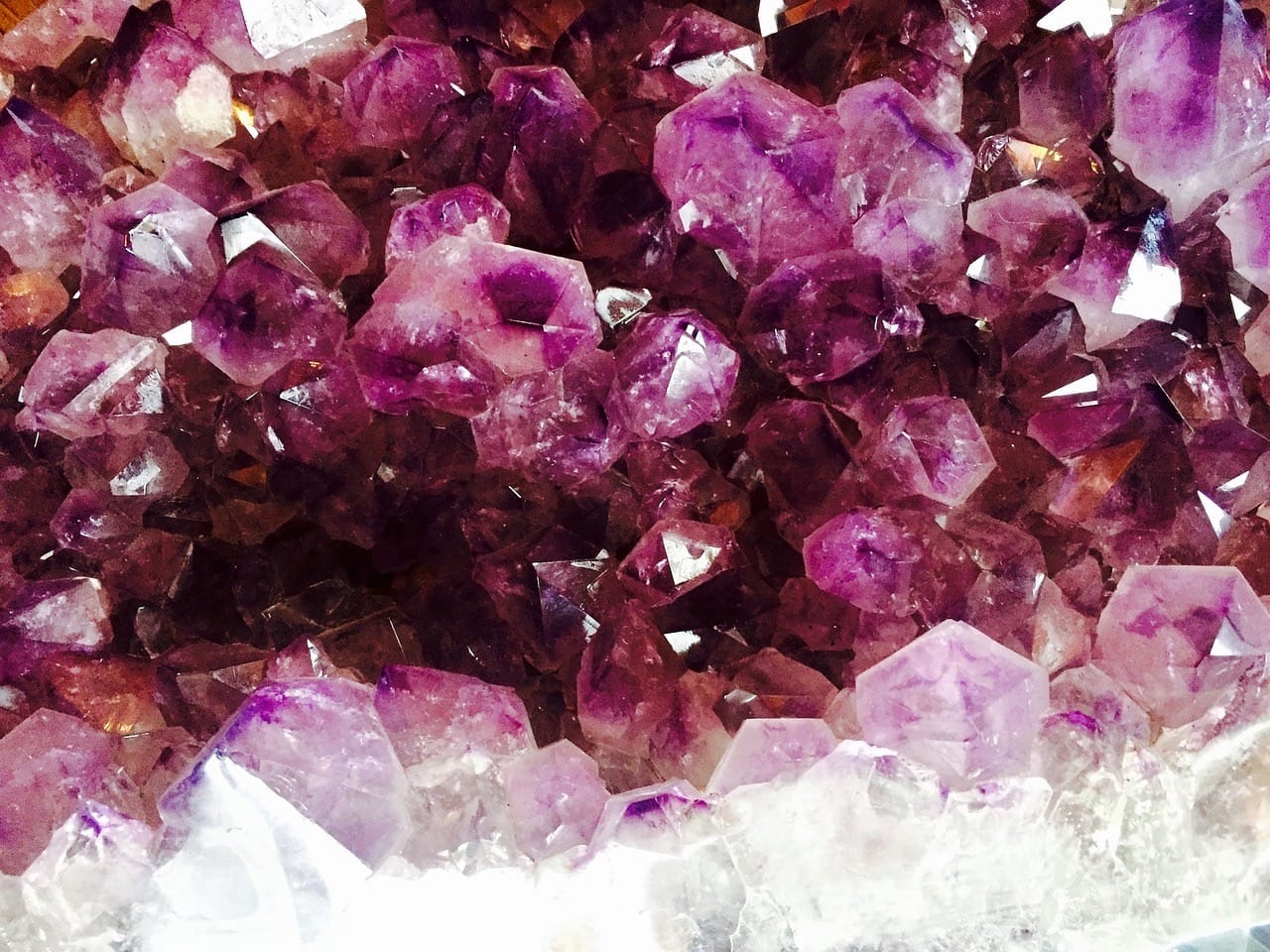What is Amber Stone?
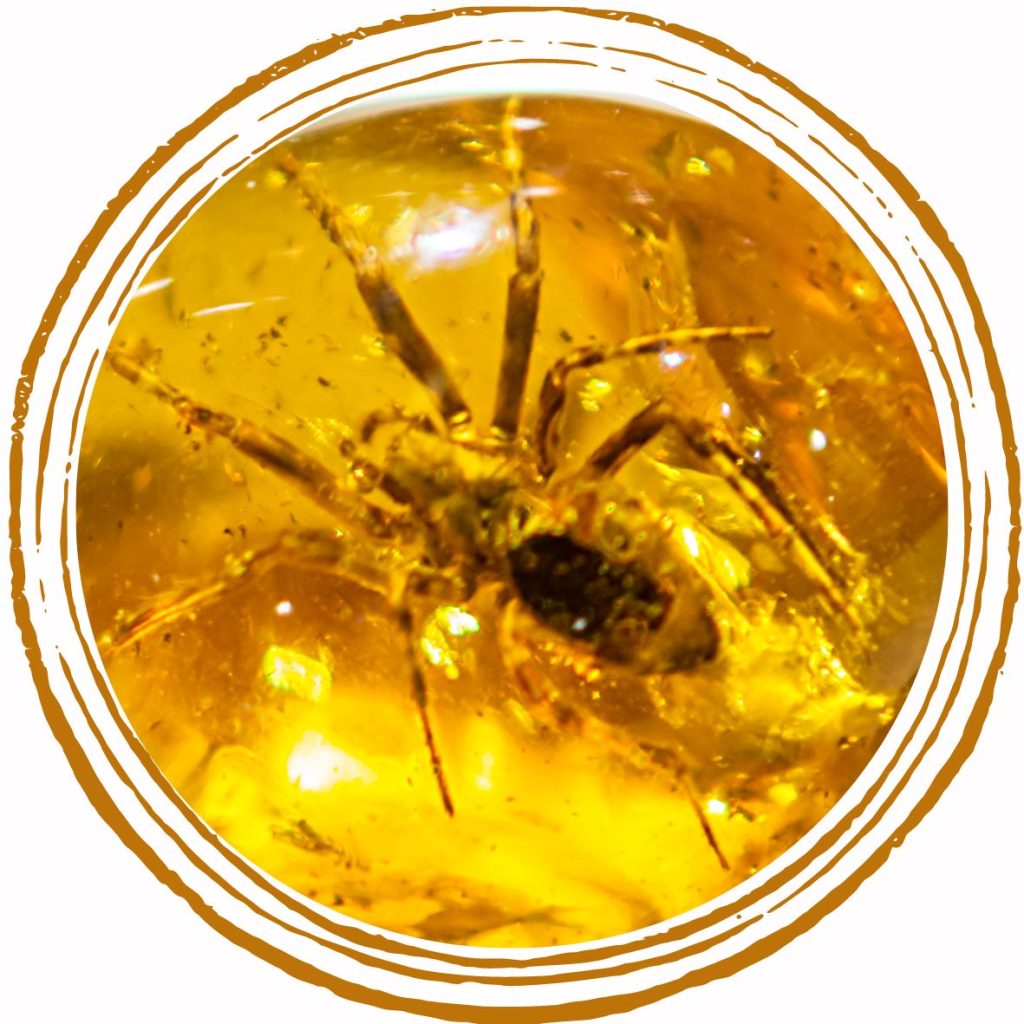
Amber stone is not actually a stone, but rather fossilized tree resin that has been hardened and preserved over millions of years. It is considered a gemstone due to its beautiful colors and ability to be polished to a high shine.
Amblygonite Specifications & Characteristics
| Feature | Description |
|---|---|
| Type | Fossilized tree resin |
| Color | Yellow, orange, brown (most common); red, green, blue, black (less common) |
| Hardness | 2 – 2.5 Mohs scale (soft) |
| Specific gravity | 1.05 – 1.10 g/cm³ |
| Crystal system | Amorphous (not a true crystal) |
| Transparency | Transparent to translucent |
| Luster | Vitreous (glassy) to waxy |
| Cleavage | None |
| Inclusions | Often contains trapped insects, plants, or other organic matter |
| Formation | Hardened tree resin over millions of years (often under pressure and heat) |
Amber is not technically a mineral but rather an organic gemstone. It originates from the sap or resin secreted by various species of trees, particularly conifers, such as pine and fir.
Over time, this sticky resin can trap and preserve insects, plants, and even small vertebrates like lizards or frogs that happened to be in proximity to the tree. Through a natural process called polymerization, these tree resins undergo chemical changes and gradually harden into amber over thousands of years.
Historical Significance and Cultural Uses of Amber Stone
Since ancient times, amber stone has held immense significance in various cultures across the globe. Its allure can be traced back thousands of years to civilizations such as the Greeks, Romans, Egyptians, Vikings, and Native Americans. In Greek mythology, amber was associated with Phaeton’s sisters who were transformed into poplar trees to honor their brother after his tragic death.
The golden gleam of amber symbolized their everlasting presence in nature. The Romans believed that wearing amber could ward off evil spirits and protect against illness.
The Vikings revered amber as a precious talisman imbued with protective powers against malevolent forces. They often used it in amulets worn by warriors for good luck in battle or as charms for protection during sea voyages.
Similarly, Native American tribes held amber in high regard due to its connection with natural elements and healing properties. It was believed to be a vessel of healing energy, capable of bringing balance and harmony to the body, mind, and spirit.
Native Americans also used amber in their ceremonies and rituals as a symbol of luck and prosperity. Throughout history, societies have utilized amber not only for its beauty but also for its practical uses.
For example, it was highly valued as a material for creating intricate jewelry pieces, decorative objects, and even religious artifacts. Its warm hues and organic charm have made it a popular choice for adornment in various cultures across the ages.
Amber stone is an extraordinary gemstone with a rich history that spans millennia. Its unique formation from fossilized tree resin gives it unparalleled beauty and intrigue.
Moreover, its cultural significance in different civilizations adds further mystique to this captivating gemstone. From ancient mythology to modern jewelry making, amber’s allure continues to bewitch all who encounter its timeless beauty.
Formation and Composition of Amber Stone
Explanation of Fossilized Tree Resin Process
Amber stone, with its captivating beauty and unique properties, is not formed overnight. It undergoes a fascinating process that begins millions of years ago.
The journey of amber starts when tree resin, a sticky substance secreted by trees to protect themselves from injury or infection, oozes out. This resin can trap insects, plant debris, and even small animals in its sticky embrace.
Over time, as the resin hardens and solidifies due to exposure to air or burial under layers of sediment, it transforms into amber. The fossilization process plays a crucial role in the formation of amber stone.
Through a combination of heat and pressure over thousands of years, the hardened resin gradually undergoes chemical changes. Polymerization occurs as the resin molecules crosslink and form long chains, giving rise to the distinct structure seen in amber today.
Chemical Composition and Properties of Amber Stone
Amber stone is primarily composed of carbon (about 79%), hydrogen (around 10%), and oxygen (approximately 10%). However, it also contains trace amounts of other elements like sulfur, nitrogen, and occasionally metals such as calcium or magnesium. This complex mixture contributes to its unique physical properties.
One noteworthy property is its amorphous structure – unlike most minerals that have a crystalline arrangement. This attribute allows light to pass through amber easily while causing it to scatter or refract within the material.
As a result, we witness the mesmerizing play of color within translucent pieces. Amber’s hardness ranges from 2 to 2.5 on the Mohs scale – relatively soft compared to gemstones like diamonds or rubies but still durable enough for jewelry use if properly cared for.
Its specific gravity varies between 1.05-1.10 g/cm³, making it buoyant in saltwater and allowing it to float when detached from its host rock. Furthermore, amber stone has unique electrical properties.
When rubbed against certain materials like wool or fur, it can develop a static charge that attracts lightweight particles like dust or small pieces of paper. This phenomenon is known as “electrostatic attraction” and has been observed since ancient times.
Understanding the formation process and chemical composition of amber stone sheds light on its remarkable properties. From its amorphous structure to its electrical characteristics, amber continues to intrigue scientists and capture the hearts of jewelry enthusiasts worldwide.
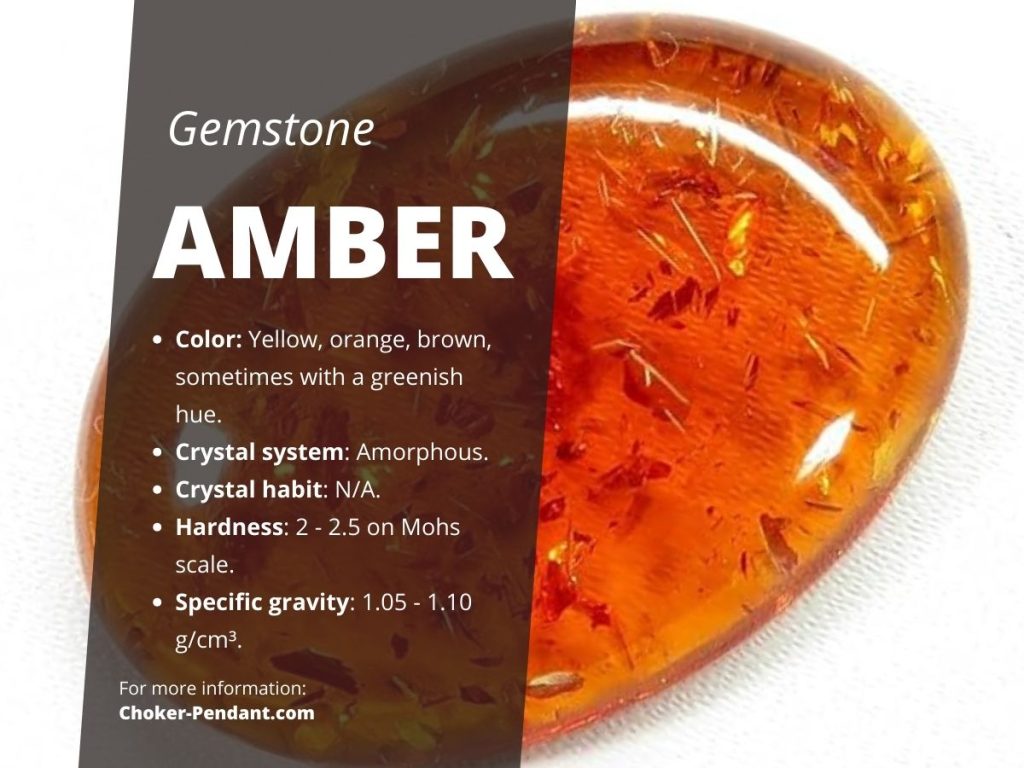
Types and Colors of Amber Stone
Differentiating between Baltic, Dominican, and other types of Amber
Amber stone, a captivating gem derived from fossilized tree resin, comes in various types that differ in their geographical origin and characteristics. One notable type is Baltic amber, also known as succinite.
This variety is primarily found along the shores of the Baltic Sea, particularly in countries such as Lithuania, Latvia, Estonia, and Russia. Baltic amber is highly valued for its exceptional clarity and rich golden-yellow hue.
Another prominent type is Dominican amber. This exquisite variety originates from the Dominican Republic in the Caribbean.
Renowned for its extraordinary clarity and diverse range of colors, Dominican amber showcases a vibrant spectrum that includes shades of yellow, orange, red, brown, and even greenish-blue hues. Apart from Baltic and Dominican amber stones being widely recognized for their distinct qualities, there are also other types worth mentioning.
For instance: – Mexican Amber: Sourced primarily from southern Mexico’s Chiapas region and renowned for its vibrant yellow to reddish-brown coloration.
– Bitterfeld Amber: Found in Germany’s Saxony-Anhalt region with a unique black or dark brown appearance due to high carbon content. – Burmese Amber: Extracted primarily in Myanmar (Burma) with tones ranging from pale yellow to deep reddish-brown.
Variation in colors – from golden yellow to red green blue and even black
Amber stone exhibits an astonishing array of colors that captivate admirers worldwide. The most common color associated with this gemstone is a warm golden-yellow hue reminiscent of sunlight captured within ancient resin.
However, it must be noted that amber’s color palette extends well beyond this traditional shade. In addition to the classic golden tones seen prominently among Baltic amber stones, variations exist within each type as well as across different regions.
Baltic amber, for instance, can range from translucent honey-yellow to deeper shades of orange and brown, often displaying captivating inclusions such as plant matter or trapped insects. Dominican amber, on the other hand, showcases a remarkable diversity of colors rarely found in other types.
From vibrant yellows and fiery oranges to deep reds and rich browns, Dominican amber delights collectors with its remarkable chromatic spectrum. It even surprises with occasional greenish-blue hues caused by a rare mineral inclusion called blue amber.
Amber stones from other regions also exhibit an exciting array of colors. Mexican amber often exhibits variations of yellow, ranging from pale lemon to intense golden tones.
Bitterfeld amber’s unique black or dark brown coloration sets it apart from other varieties. Burmese amber displays a wide range of hues including pale yellows, bright oranges, and rich reddish-browns.
The diverse types and splendid colors of amber stone offer an enchanting tapestry for jewelry enthusiasts and collectors alike. Whether it is the radiant golden yellows associated with Baltic amber or the vividly diverse palette exhibited by Dominican amber, this gemstone provides a kaleidoscope of natural beauty that continues to fascinate people around the globe.
Geological Distribution of Amber Stone
Major Sources Around the World
Amber, with its rich and captivating beauty, can be found in various parts of the world. However, some regions are renowned for their exceptional amber deposits.
The Baltic region, encompassing countries such as Lithuania, Latvia, and Estonia, is undoubtedly one of the most prominent sources of this exquisite gemstone. Baltic Amber has been treasured for centuries due to its abundance and exceptional quality.
Another notable source is the Dominican Republic in the Caribbean. This tropical paradise is home to a unique type of amber known as Dominican Amber.
Renowned for its striking clarity and diverse range of colors, Dominican Amber captures the hearts of collectors and jewelry enthusiasts alike. Mexico also boasts significant amber deposits in Chiapas state, located in the southern part of the country.
Mexican amber showcases a fascinating array of colors ranging from warm yellows to deep reds and even rare blues. These diverse sources contribute to the remarkable variety seen in ambers worldwide.
Unique Geological Conditions Required for Formation
The formation process of amber stone is an intriguing journey that spans millions of years. It begins when resin from ancient coniferous trees oozes out as a protective response to injury or disease. Over time, this sticky resin undergoes polymerization through natural processes like oxidation and polymer cross-linking.
To form substantial deposits of fossilized tree resin like amber requires specific geological conditions that are relatively rare. Firstly, there must be an abundance of resin-producing trees growing within a particular region or ecosystem.
These trees should also thrive under favorable climatic conditions characterized by warm temperatures and high humidity. Furthermore, after being released from the tree through natural occurrences like storms or decayed branches falling off, the resin needs to be quickly buried under layers upon layers of sedimentary materials such as sand or silt.
This burial protects the resin from exposure to oxygen, promoting its preservation and eventual transformation into amber over millions of years. The unique combination of resin-producing tree species, favorable climatic conditions, and rapid burial under sedimentary layers culminate in the creation of amber deposits.
These geological factors contribute to the rarity and preciousness of this captivating gemstone. Amber’s geological distribution showcases its connection with diverse corners of our planet.
From the Baltic region’s ancient forests to the tropical realms of the Dominican Republic and the sun-drenched landscapes of Mexico, each source offers a distinct charm that makes amber stone an enchanting treasure found across continents. Understanding these fascinating geological conditions aids in appreciating the remarkable journey that amber undertakes from raw resin to magnificent gemstone.
Physical Properties and Characteristics
Hardness Scale Rating and Durability of Amber Stone
Amber stone possesses a unique set of physical properties that make it both alluring and delicate. On the Mohs scale of mineral hardness, amber typically ranks between 2 and 2.5, which means it is relatively soft compared to other gemstones. This softness is attributed to its organic origins as fossilized tree resin.
Although not particularly durable in comparison to harder gemstones, such as diamonds or sapphires, amber has its own charm that lies in its delicate nature. The relative softness of amber can cause it to be susceptible to scratches and damage if not handled with care.
It is important to keep in mind that even though amber may appear solid, it can still be quite fragile due to its organic composition. Therefore, it is recommended to store amber jewelry separately from harder gemstones or metals that could potentially scratch or damage the stone’s surface.
Optical Properties – Transparency, Refraction Index, Fluorescence
One of the most captivating aspects of amber stone lies in its optical properties. The transparency of amber varies depending on the variety and can range from almost opaque to semi-transparent or even transparent.
Baltic amber tends to have higher transparency compared to other types. Amber’s refractive index plays a significant role in its visual appeal as well.
The refractive index refers to how light bends when passing through a material. In the case of amber, it has an average refractive index ranging between 1.539 and 1.545 – similar to certain plastics like polystyrene or acrylic glass but lower than diamonds or glass.
Fluorescence is another intriguing quality found in some types of amber stones when exposed to ultraviolet (UV) light sources like blacklight lamps. Under UV light, certain ambers may exhibit a yellow, green, or bluish fluorescence, adding an enchanting glow to the stone.
However, it’s important to note that not all amber varieties display this fluorescence and its presence can vary within each type. Overall, the physical properties of amber contribute to its unique appeal and charm.
Its relatively soft nature requires careful handling and storage to preserve its beauty over time. The varying transparency and intriguing optical qualities provide a fascinating visual experience for both admirers and collectors of this captivating gemstone.
Cultural Significance and Symbolism in Different Civilizations
Ancient Greek Mythology: The Story of Phaeton’s Sisters Transformed into Amber Trees
In ancient Greek mythology, amber stone holds a fascinating tale intertwined with the tragic story of Phaeton. According to the myth, Phaeton’s father was the sun god Helios. Seeking proof of his divine lineage, Phaeton asked his father to let him drive the sun chariot for one day.
However, unable to control the horses that pulled the chariot across the sky, Phaeton lost control and created chaos on Earth. As a result, Zeus intervened and struck him down with a thunderbolt.
Grief-stricken by her brother’s demise, his sisters (also known as Heliades) mourned endlessly near a riverbank. In their sorrow, they were transformed into poplar trees.
But even in their altered state, they continued to weep tears of amber which flowed down as translucent golden droplets onto the riverbank below. Thus, this mythical story explains why amber is often associated with tears and grief.
Viking Culture: Belief in Amber’s Protective Powers Against Evil Spirits
Amber stone held great significance in Viking culture as it was associated with protection against evil spirits and harm. Vikings believed that amber possessed magical properties due to its origins from tree resin hardened by time and nature’s forces. They adorned themselves with amber amulets or placed them around their living spaces to ward off malevolent entities.
This belief stemmed from their observation of how Baltic amber would attract small objects when rubbed vigorously—creating static electricity similar to how wool behaves when rubbed against other materials. This natural phenomenon led Vikings to associate this electrical property of Amber stone with its ability to repel negativity and protect against evil influences.
Native American Folklore: Association with Healing Properties and Connection to Nature Spirits
In Native American folklore, amber stone symbolizes healing properties and carries a profound connection to nature spirits. Many tribes believed that amber was a gift from the Great Spirit, representing the life force of trees and their remarkable ability to heal themselves.
They associated amber with rejuvenation, purification, and spiritual growth. For centuries, Native Americans utilized amber in various healing rituals and medicinal practices.
Amber was believed to draw out negative energy from the body, restoring balance and vitality. The indigenous people revered amber as a conduit between the physical and spiritual realms, facilitating communication with nature spirits for guidance and wisdom.
Uses in Jewelry Making
Traditional Techniques for Crafting Amber Jewelry
Crafting jewelry with amber has a rich tradition rooted in ancient craftsmanship techniques. Skilled artisans carefully carve or shape raw pieces of amber into beads, pendants, or intricate figurines using primitive tools like chisels or awls. These traditional methods require immense skill to bring out the beauty of the stone while preserving its natural characteristics.
Amber can also be polished using sandpaper or buffing wheels to achieve a smooth finish that accentuates its mesmerizing glow. Additionally, ancient techniques such as heat treatment are employed to enhance colors or improve transparency in lower-quality ambers.
Popular Designs and Settings for Showcasing Amber Stones
Amber’s captivating warm hues make it a popular choice for unique jewelry designs. From delicate earrings to striking statement necklaces, there are various modern settings that highlight the beauty of this exquisite gemstone.
Common settings include bezel settings where the gem is surrounded by metal for protection and added stability or prong settings that hold the stone securely while allowing maximum light entry. Amber is also often incorporated into elaborate filigree designs which consist of fine metal threads meticulously arranged into intricate patterns.
Importance of Color Matching When Creating Unique Pieces
Color is a crucial aspect when crafting amber jewelry, and jewelry makers pay meticulous attention to color matching. The varying shades of amber, ranging from golden yellows to deep reds and even rare blues, offer endless creative possibilities.
Designers often consider the wearer’s complexion, personal style, and the intended meaning behind the piece when selecting amber stones. Harmonious color combinations are sought after for their aesthetic appeal and ability to evoke specific emotions or convey symbolic messages.
Healing Properties & Metaphysical Beliefs
Historical Use as a Natural Remedy for Various Ailments
Throughout history, amber stone has been esteemed for its healing properties in various cultures. Traditional remedies utilized powdered or infused amber internally or externally to alleviate ailments such as respiratory disorders, digestive issues, and joint pain. Amber was believed to possess natural antimicrobial properties that could aid in fighting infections.
In ancient times, people also wore amber necklaces or bracelets close to the body to harness its alleged healing energy. It was believed that as the stone warmed against the skin, it released beneficial oils that could promote overall well-being.
Connection Between Amber Stone’s Electromagnetic Properties & Healing Energy
Amber has unique electromagnetic properties that have fascinated scholars and metaphysical practitioners alike. When rubbed with a cloth or warmed by body heat through contact with human skin, amber becomes electrically charged due to its static electricity-generating qualities.
Metaphysically speaking, this electrical property is believed to amplify positive energy within an individual’s aura and restore balance on physical, emotional, and spiritual levels. It is thought that wearing or holding an amber stone can transmute negative energies into more positive vibrations while promoting overall healing and well-being.
Modern Metaphysical Beliefs Surrounding Emotional Balance & Spiritual Protection
In contemporary metaphysical beliefs, amber is cherished for its ability to foster emotional balance and provide spiritual protection. It is considered a stone of warmth, joy, and light that can help dispel negative emotions, reduce stress, and promote a sense of inner peace.
Amber is often associated with the solar plexus chakra, which governs personal power and self-confidence. It is believed to enhance one’s courage and self-esteem while serving as a shield against psychic attacks or negative energies encountered in daily life.
Preservation Techniques & Care Tips
Proper preservation of amber stone ensures its longevity and maintains its exquisite beauty over time. Here are some care tips to keep your amber jewelry in optimal condition: – Protect it from direct sunlight: Prolonged exposure to sunlight can cause the color of the amber stone to fade.
Store or display your jewelry in a cool, dark place when not in use. – Avoid harsh chemicals: Amber is sensitive to certain chemicals present in perfumes, hairsprays, and cleaning agents.
Remove your jewelry before using such products to prevent damage. – Clean gently: To clean your amber jewelry, use mild soap diluted with warm water.
Gently wipe the surface with a soft cloth or brush. Avoid using abrasive materials that can scratch the stone.
– Handle with care: Amber is relatively soft compared to other gemstones. Handle it delicately and avoid subjecting it to rough treatment or sudden impacts that may cause fractures or chips.
Conclusion: Through mythology, cultural beliefs, craftsmanship techniques, metaphysical associations, and healing properties; amber stone has captivated humanity for centuries across different civilizations.
Its shimmering beauty combined with rich symbolism has made it an enduring gemstone cherished for both its aesthetic allure and perceived mystical qualities. Whether worn as jewelry or treasured for its historical significance, amber continues to inspire awe while connecting us to ancient traditions rooted in the mysterious depths of nature.

